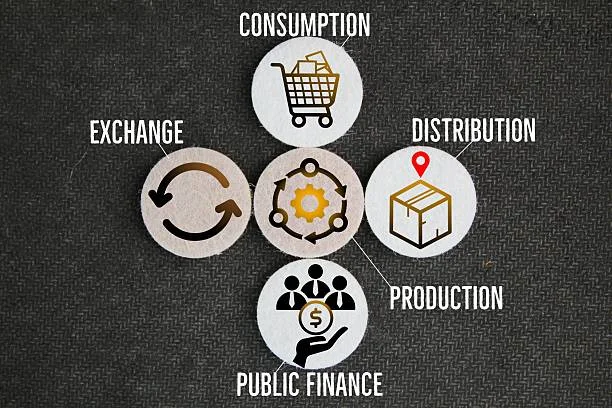TECHNOLOGY
Choosing the Right Generator for Construction Projects: Key Considerations

One of the critical decisions contractors face when embarking on construction projects is selecting the appropriate generator. The right generator can ensure seamless operation of power tools, equipment, and lighting on-site, enhancing productivity and efficiency. However, choosing a generator involves considering factors beyond simply wattage and price. We will explore essential considerations that construction professionals should evaluate when selecting a generator from Rosco Generators for their projects.
Power Requirements and Wattage Needs
Understanding the specific power requirements of your construction site is paramount before selecting a generator. Different tools and equipment have varying wattage demands, so it’s crucial to calculate the total wattage needed simultaneously or in stages. Start by listing all the equipment the generator will power, noting their starting and running wattage. This information will guide you in determining the minimum wattage capacity required from the generator to avoid overloading, which can damage both the equipment and the generator itself.
Fuel Type and Efficiency
Your generator’s choice of fuel type can significantly impact operational costs and convenience on the construction site. Common options include diesel, gasoline, propane, and natural gas. Diesel generators, for instance, are known for their fuel efficiency and longevity, making them suitable for extended use in construction environments. On the other hand, gasoline generators are more readily available and cost-effective but may require more frequent refueling. Propane and natural gas generators offer cleaner emissions and are ideal for indoor use where ventilation is a concern. Evaluate these factors, fuel availability, and storage requirements to make an informed decision.
Portability and Mobility
Construction sites often require generators to be mobile and easily transportable across varying terrain. Portability considerations include the generator’s weight and size, the presence of handles or wheels for maneuverability, and whether it can fit into confined spaces or be transported on trucks or trailers. Investing in generators with robust mobility features can streamline operations and reduce downtime associated with repositioning equipment for larger projects involving multiple sites.
Noise Levels and Environmental Impact
Construction projects frequently operate in residential or noise-sensitive areas where minimizing noise pollution is crucial. Generators with lower decibel ratings are preferred in such environments to comply with local regulations and maintain good relations with surrounding communities. Additionally, the environmental impact of generator emissions should be considered, especially in urban or ecologically sensitive areas. Opting for generators equipped with advanced mufflers or those certified for low emissions can mitigate environmental concerns while ensuring compliance with regulatory standards.
Durability and Build Quality
The rugged nature of construction sites demands generators that can withstand harsh conditions and frequent use without compromising performance. Assess the build quality of potential generators, focusing on materials used, protective features against dust and water ingress (IP ratings), and overall durability ratings from reliable sources or user reviews. Investing in generators from reputable brands known for their robust construction and reliability can minimize downtime due to equipment failure and reduce long-term maintenance costs.
Ease of Maintenance and Serviceability
Regular maintenance is essential to prolonging the lifespan and ensuring the reliability of generators on construction sites. Choose models that facilitate straightforward maintenance tasks such as oil changes, filter replacements, and spark plug inspections. Accessibility to service and repair facilities, as well as the availability of spare parts, should also be considered when selecting a generator. Opting for models with comprehensive warranty coverage and accessible customer support can further streamline maintenance efforts and provide peace of mind during extended project timelines.
Budget Constraints and Total Cost of Ownership
While the initial purchase price is a significant consideration, construction professionals should evaluate the total cost of ownership over the generator’s lifespan. This includes factoring in fuel costs, maintenance expenses, potential downtime, and resale value. Assessing the return on investment (ROI) for higher-quality generators that offer better fuel efficiency, more extended warranties, and lower maintenance requirements often justifies a higher upfront cost. Conducting a thorough cost-benefit analysis tailored to your project’s specific needs will help you make a financially prudent decision.
Adaptability to Changing Conditions
Construction projects often encounter dynamic environments where power demands and site conditions change unexpectedly. Choosing a generator with versatile features and scalability options can mitigate risks associated with fluctuating power needs. Consider generators that can parallel-connect for increased power output, adjustable voltage settings for different equipment requirements, or innovative technology integration for remote monitoring and control. This adaptability ensures that the generator can grow with your project’s needs and efficiently handle unforeseen challenges, enhancing overall project flexibility and resilience. By anticipating and planning for variability in power requirements, construction professionals can optimize resource utilization and maintain productivity under varying operational conditions.
Selecting the right generator for construction projects involves carefully evaluating power requirements, fuel efficiency, portability, noise levels, durability, maintenance needs, and cost-effectiveness. By prioritizing these considerations and aligning them with the demands of your specific construction site, you can ensure optimal performance, reliability, and efficiency from your generator throughout the project lifecycle. Taking the time to choose wisely at the outset will pay dividends in productivity, operational continuity, and project success.
APPS & SOFTWARE
How Healthcare Technology and Data-Driven Management Solutions Are Transforming Modern Health Systems

The global healthcare systems are transforming rapidly because of technology and data-oriented approaches. The digital platforms have gained the trust of hospitals, insurers, and healthcare administrators because they are used to manage the operations and reduce errors and enhance service delivery. A good illustration of this change is the Managed Care Systems, Inc. (MCSI) company that has a reputation of being pioneering in its healthcare data solutions. By highlighting the concept of management automation and quality data processing, MCSI demonstrates that managed care software could assist healthcare organizations in processing complicated information with speed and precision. With modern technology, healthcare providers have a better chance in managing the increasing volumes of data as well as regulatory requirements.
Technology in healthcare has ceased to be a patient record system or billing software. It now encompasses a broad spectrum of systems, which govern enrollment, claims, reporting, and communicating between healthcare partners. The systems ensure that an organization does not go through manual working that usually causes delays and errors. The use of data-driven management solutions enables the decision-makers to view the patterns, detect problems early and formulate improvements basing on actual information rather than assumptions. The change contributes to the fact that healthcare systems become more efficient, more transparent, and scalable.
The essence of this transformation is the concept of an interconnected digital network in which the information moves without problems across systems. It is possible to achieve this by having a trusted managed care system that helps healthcare organizations to connect data across various sources and transform it into valuable insights. The strategy enhances improved planning, expedition, and enhanced adherence to healthcare standards. Systems supported by technology offload the staff and enable them to concentrate on more meaningful activities other than the manual repetitive process.
The Growing Role of Healthcare Technology in Modern Systems
Technology in the healthcare is a major aspect in the running of health systems in the modern world. Digital tools are currently facilitating nearly all administrative activities, such as patient enrollment all the way through claims settlement. In the absence of these tools, it would become difficult to handle the volume and complexity of healthcare data by organizations. Technology assists in making organized work processes which can be tracked easily and changed when the necessity arises.
The current health care systems are built to support big datasets without shrinking the quality and security. They minimize the threat of losing information and assist companies to comply with rigorous compliance regulations. Healthcare technology also helps minimize expenses and turnaround times by automation of routine activities. This makes the operational environment more stable and predictable.
Consistency is another valuable advantage. Technology will make sure that the processes are carried out using the same rules on a regular basis and this is very important in healthcare management. Standardization of systems also helps organizations provide quality services to various departments and partners. Such uniformity ensures provider, payer and patient trust.
Understanding Data-Driven Management Solutions in Healthcare
Data-driven management solutions entail the use of correct data in making decisions and enhancing performance. Various sources of data are available in the area of healthcare and include enrollment records, claims files, eligibility checks, and reporting systems. It is not feasible to handle this data manually. Automated systems assist in gathering, cleaning and the processing of data into a useful format.
These solutions enable the healthcare leaders to monitor performance measures and identify inefficiencies. As an illustration, delays in claims processing or missing links in the enrollment processes can be identified using data trends. In good understanding, organizations are able to act before minor problems end up being big. This is an aggressive stance that results in improved results and operations.
Long term planning is also supported by data-driven systems. Through historical analysis, healthcare institutions have the opportunity to predict the future, hence making resources available ahead of time. This will assist in minimizing wastage and where there is a hike in demand, services will always be available.
How Management Automation Improves Healthcare Operations
One of the most effective motivators of efficiency in healthcare systems is management automation. Automation is used to substitute the repetitive manual tasks, with system based processes which operate with minimum human intervention. This will minimize mistakes, which occur due to manual data entry, and also accelerate the workflows.
Automation is frequently applied in healthcare administration in the enrollment processing, eligibility checks, claims routing, and reporting. Such processes are associated with huge amounts of data and tight deadlines. Automated systems also make sure that there are rules that every step should adhere to and that they are done on time.
Accountability is also enhanced through automation. All actions are documented by digital systems, and it is not difficult to monitor changes and determine problems. Such visibility assists organizations to stay within the compliance and enhance the internal controls. In the long run, auto workflows generate a more efficient and scalable healthcare operation.
Software Solutions That Support Healthcare Efficiency
Health information software is developed to address certain work requirements. These tools come with the already existing systems and assist organizations in handling data in a non-disruptive manner. High-quality software is also adaptable and can be modified with the shifts of regulations or the needs of the business.
Healthcare software platforms tend to facilitate data interchange among various stakeholders. This consists of payers, providers, and third-party administrators. Software solutions eliminate delays and miscommunication by facilitating the flow of data. They also facilitate quicker decision making as they give real time access to crucial information.
The other important aspect is customization. Healthcare organizations possess specific workflow and needs. Solutions based on software with configuration enable the organization to match technology with their goals. This facilitates easier and effective adoption of technology.
Data Services and Their Importance in Healthcare Management
Data services play an important role in converting raw healthcare data to valuable information. Such services are data validation, transformation and integration. The healthcare organizations may end up operating with incomplete or inaccurate information without proper data services.
Good data services will provide data that is of quality before it is utilized. This minimizes reporting and processing errors. Data services are also used to unify the information of multiple systems in to one clear picture. This combined method facilitates more analysis and decision-making.
Compliance is also involved in healthcare data services. Accurate and timely reporting in the regulatory bodies is necessary. The data services are reliable in assisting the organizations to fulfill these requirements and prevent penalties. Substantial data services are effective in establishing trust among partners and regulators over time.
Expertise in Healthcare Data Management and Deployment
The experience is a sensitive aspect in the implementation of healthcare technology solutions. The healthcare data is complicated and heavily regulated. Organizations should have partners, who are aware of technical systems and healthcare regulations. Data management is part of the experience that facilitates a successful deployment and proves successful in the long term.
Installing software is not the only thing when it comes to solution deployment. It involves planning, testing and integration with the existing systems. Proven teams understand how to cope with these steps without interfering with the day to day activities. They also offer continuous support to have systems that never fail to do well.
Organizations respond to change with the help of expert knowledge. There is frequent transformation of healthcare standards and regulations. Under the professional advice, healthcare systems can refresh the processes and technology with no significant concerns. This is the flexibility needed in the long-term stability.
How MCSI Supports Data-Driven Healthcare Management
The example of the collaboration between healthcare technology and solutions based on data and management is a powerful example of the collaboration of Managed Care Systems, Inc. (MCSI). The company aims at automation of management, software and data solutions that are targeted at healthcare organizations. Its systems assist in the management of complex data workflows, which are accurate and fast.
MCSI seeks to offer the tools to assist in enrollment processing, claims, and data exchange. These solutions save on manual effort, enhance reliability. MCSI assists healthcare organizations in sustaining the same operations by emphasizing on automated data quality and data quality.
The healthcare data management experience makes the company implement the solutions that can serve the real-life needs. Its solution is scalable, compliant and efficient in the long term. This renders MCSI a useful model of the use of technology in healthcare administration.
Key Benefits of Data-Driven Healthcare Technology
The key benefits of data-driven healthcare technology can be observed under this section:
- Increased speed of enrollment and claims information.
- Automation to reduce manual errors.
- Increased transparency regarding the performance in operations.
- Enhanced adherence to the healthcare regulations.
- Scalable systems that expand as the organization expands.
These advantages demonstrate why technology and data-oriented solutions are still being invested in by healthcare organizations. The effect is not only reflected in efficiency but also on the quality and reliability of service.
The Future of Healthcare Systems Powered by Data
Technology and data-driven management are vital in the future of healthcare systems. With the ever-increasing data volumes, even the manual processes will be increasingly impractical. The online presence will be fundamental in ensuring the maintenance of the order and reactivity of the healthcare systems.
The innovation will also be supported by data-driven solutions. Being able to see the big picture, healthcare organizations can develop superior services and enhance the coordination among the stakeholders. Technology will keep on lessening administrative load and will aid in making more intelligent decisions.
Healthcare systems which invest in automation, software tools and data services will be in a better position to cope with change in the long-term. Through such examples as MCSI, companies will be able to create powerful, trustworthy systems that can facilitate the needs of the modern healthcare.
TECHNOLOGY
Your Access, Upgraded: The Professional Benefits of RM1.to

In today’s fast-paced digital economy, professionals are constantly seeking tools that streamline workflow, increase efficiency, and maintain security. One platform that has been gaining attention in the online workforce community is rm1.to. Designed to provide secure and efficient access to specialized digital services, rm1.to is redefining how professionals work, collaborate, and manage tasks in a digital-first environment.
Simplified Access for Professional Tasks
One of the standout benefits of RM1.to is its focus on streamlined access. For many professionals, managing multiple digital tools, accounts, and permissions can be a time-consuming and error-prone process. RM1.to addresses this by offering a centralized platform where users can quickly access the services they need.
Whether it’s specialized data work, content creation, or technical support, RM1.to ensures that professionals can connect with verified service providers efficiently. By eliminating the usual friction associated with task assignment, approval, and payment, users can focus on productivity rather than administrative hurdles.
Enhanced Security for Peace of Mind
Security is a top priority in any professional setting, and RM1.to integrates it as a core feature. Traditional methods of managing access and digital collaboration can leave sensitive information exposed to risk. RM1.to mitigates this with built-in protections for both clients and service providers.
For professionals, this means confidence in every interaction. Payments are securely handled, services are verified, and access is monitored to prevent unauthorized use. The platform’s focus on transparency and accountability ensures that tasks are delivered reliably, reducing disputes and creating a trustworthy environment for all users.
Efficiency That Supports Growth
Another major benefit of RM1.to is its ability to support fast, efficient workflows. In the modern digital workforce, speed is often as critical as accuracy. RM1.to allows professionals to delegate micro-tasks quickly without worrying about complex onboarding or verification processes.
By combining rapid access with secure, verified transactions, the platform allows individuals and teams to scale their operations efficiently. Professionals can take on more projects, meet deadlines faster, and maintain high-quality standards—all without compromising security or accountability.
Flexibility for Diverse Professional Needs
The versatility of RM1.to is another reason it appeals to professionals. The platform is not limited to a single industry or type of task. From creative projects and technical support to data analysis and research, RM1.to can accommodate a wide range of professional requirements.
This flexibility enables professionals to adapt to evolving workloads, delegate tasks efficiently, and access specialized expertise on-demand. The platform acts as a bridge, connecting users with services that would otherwise require time-intensive searches or additional hires.
Building Trust Through Transparency
Trust is essential in any professional relationship, particularly in digital environments where users may never meet in person. RM1.to fosters trust through clear service descriptions, structured workflows, and feedback mechanisms. Both clients and service providers can review performance and maintain accountability, which strengthens collaboration and minimizes misunderstandings.
For professionals, this transparency not only ensures reliability but also allows them to make informed decisions when choosing services or partners. The platform’s structure encourages ethical practices and responsible usage, creating a professional ecosystem built on trust.
Conclusion
RM1.to offers a combination of security, efficiency, and flexibility that makes it a valuable tool for today’s digital professionals. By simplifying access, ensuring secure transactions, supporting scalable workflows, and fostering trust, the platform enables users to focus on what truly matters: delivering high-quality work and achieving professional goals.
In a world where digital tasks are growing in complexity and volume, RM1.to represents a meaningful upgrade in how professionals manage their work. Its features provide the support, speed, and reliability needed to thrive in a competitive digital workforce, making it a go-to platform for those seeking secure and efficient access to specialized services.
TECHNOLOGY
The Power of Curation: Ultimateshop’s Quality-First CC Strategy

In the digital world, access to information is only valuable when it is accurate, relevant, and well-organized. For platforms dealing with credit card (CC) data, this principle is even more critical. Raw data dumps may contain enormous amounts of information, but without proper curation, their utility ultimateshop is limited and their reliability questionable. ultshop.mobi has distinguished itself by adopting a quality-first strategy, using careful curation to transform large datasets into actionable, trustworthy resources quality-first CC.
The Limitations of Raw Data
Many platforms prioritize volume over precision, offering massive collections of CC information that are often outdated, duplicated, or poorly formatted. While this approach may appeal to users seeking large datasets, it comes with significant drawbacks. Errors, inconsistencies, and irrelevant entries increase the risk of flawed analysis or inefficient workflows. For developers, researchers, and testers, these issues mean extra time spent cleaning and verifying data, reducing productivity and increasing the potential for mistakes.
Ultimateshop recognized that the key to meaningful value is not simply the quantity of data but the quality. By prioritizing accuracy, organization, and usability, the platform provides users with curated datasets that are ready for immediate, reliable use quality-first CC.
Curation as a Core Strategy
At the heart of Ultimateshop’s approach is curation—a deliberate process of selecting, verifying, and refining data to ensure it meets strict quality standards. Every CC entry is evaluated for validity, accuracy, and relevance before inclusion. Duplicates are removed, formatting is standardized, and outdated or invalid entries are filtered out.
This rigorous curation process ensures that users receive datasets they can trust. Rather than sorting through thousands of questionable entries, users can focus on applying the information to research, testing, or legitimate project work. The curated approach turns potentially chaotic datasets into structured, usable resources.
Enhancing Usability Through Organization
Quality-first curation goes beyond validation—it also emphasizes organization and accessibility. Ultimateshop structures data in a way that is intuitive and user-friendly. Categories, tags, and consistent formatting make it easy to navigate even large datasets quality-first CC.
This thoughtful organization saves users significant time and reduces the risk of errors. For tasks that require precision and speed, such as testing payment systems or analyzing trends, the ability to access well-structured, reliable data is invaluable. Ultimateshop’s curated lists are not only accurate—they are actionable.
Trust and Reliability as Key Differentiators
In an industry where credibility is crucial, Ultimateshop’s quality-first strategy establishes trust. Users can rely on the platform to deliver accurate, up-to-date information without the frustration of sifting through unreliable entries. By emphasizing curation, Ultimateshop ensures that its datasets are consistently dependable, setting it apart from competitors that focus solely on volume.
Furthermore, this commitment to quality supports ethical and secure usage. Curated, verified data minimizes the risk of errors that could lead to misuse or security vulnerabilities, aligning the platform with responsible digital practices quality-first CC.
Continuous Improvement and Adaptation
Ultimateshop’s strategy is not static. The platform continuously updates and refines its curated datasets, incorporating new information while removing outdated entries. This dynamic approach ensures that users always have access to relevant, accurate data, allowing the platform to adapt to evolving needs and maintain its high standards over time.
Conclusion
Ultimateshop demonstrates the transformative power of curation in the CC data space. By prioritizing quality over quantity, verifying entries, organizing information effectively, and maintaining ongoing refinement, the platform provides reliable, actionable datasets that enhance efficiency and trust.

 BUSINESS9 months ago
BUSINESS9 months agoBrand Visibility with Imprint Now and Custom Poly Mailers

 HOME IMPROVEMENT9 months ago
HOME IMPROVEMENT9 months agoThe Do’s and Don’ts of Renting Rubbish Bins for Your Next Renovation

 HEALTH8 months ago
HEALTH8 months agoHappy Hippo Kratom Reviews: Read Before You Buy!

 LIFESTYLE10 months ago
LIFESTYLE10 months agoThe Disciplinary Wives Club: Spanking for Love, Not Punishment

 TECHNOLOGY8 months ago
TECHNOLOGY8 months agoDizipal 608: The Tech Revolution Redefined

 ENTERTAINMENT1 month ago
ENTERTAINMENT1 month agoExploring the Kristen Archives: A Treasure Trove of Erotica and More

 BUSINESS10 months ago
BUSINESS10 months agoExploring the Benefits of Commercial Printing

 HEALTH5 months ago
HEALTH5 months agoYour Guide to Shedding Pounds in the Digital Age












